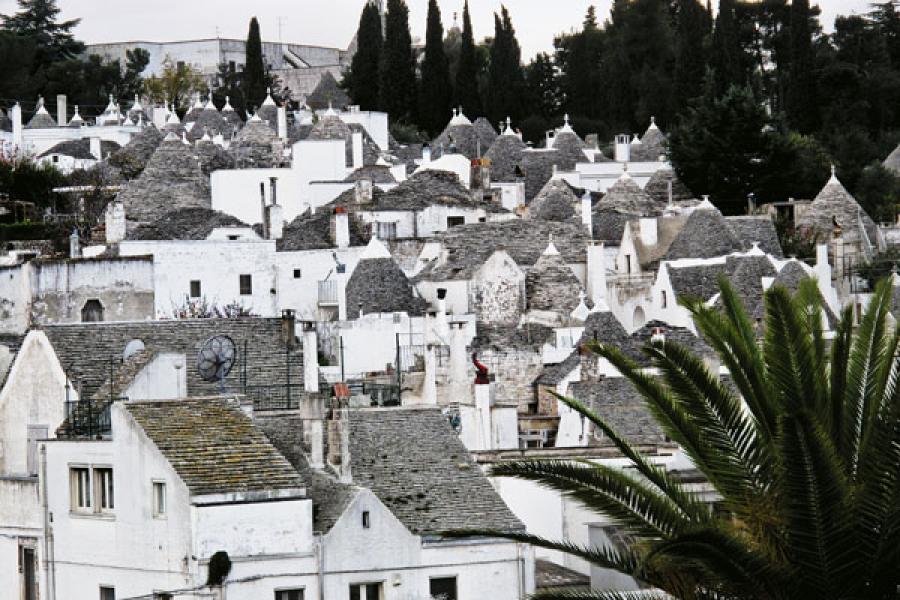
Trulli Unique Alberobello
Alberobello seems right out of a fairy land, but it actually has somewhat less fanciful origins
Driving south of the city of Bari, along the high heel of Italy, an odd feature starts popping up here and there amid the houses and abundant olive groves. It’s a low, pointy stone roof on a white, usually conical structure. You wonder: Temple? Silo? Weird Masonic lodge? Gradually the structures get thicker on the ground, and then appear in clusters, and then suddenly you’re engulfed by them.
This is Alberobello, the twin-hilled village that looks like a Harry Potter movie set on acid. It’s a UNESCO World Heritage site for its unique ‘trulli’ constructions. I climb the hill where the regular town lies, to get a terrace view of the ancient settlement on the other hill, glowing in the evening light. It looks like a throwback to a thousand years ago, in fairyland.
Tiny streets wind through whitewashed, witch-hatted stone houses that occasionally sport pagan signs like the sun, or a cross in a circle. The insides of the houses are tiny and rounded; the glow of warm lights spills from open doorways.
Walking among these fluid Gaudi-esque structures, surging and swelling around me, rehydrates the imaginative nutrients of my childhood: I keep expecting Bilbo Baggins’s hairy feet to peep across a threshold, or Noddy’s little red car to come puttering down the street, or to catch Baba Yaga squabbling with Hansel and Gretel, or, through a window, to see a fairy shake out her wings. I wouldn’t bat an eyelid if I ran into that short blond moustachioed warrior and his fat friend from that little village in Gaul. I feel like a misplaced Muggle.
All of these references seem befitting. And yet none of them are, because, far from being any sort of toy land, Alberobello is that most grown up of things: A tax evasion scam.
Bari district’s long history has included Byzantine and Norman invasions, and even a stint as an Islamic emirate. But five hundred years ago or so, this region of Conversano was a fiefdom ruled first by the counts of Conversano. And where there are counts, serfs are not far behind.
The counts allowed their feudal tenants, who worked the land, to build shelters in the fringes of what was then an oak forest. But permanent shelters attracted property tax, and if there’s one thing a noble hates, it is to give his money to someone fancier. So — the oldest story in the world, linking Italy of the Middle Ages to present-day Delhi — the serfs had to build houses that could be knocked down whenever the king’s tax inspectors came calling, leaving no trace of habitation, and put back up when they left. The trulli is a unique solution to this problem. Stone — the only available building material — is simply overlaid slab upon slab, without mortar.
When, in 1797, the residents of Alberobello (which means ‘beautiful tree’) were granted independence, their homes evolved into what is now a charming little settlement. Today the insides have been modernised; you can rent a trulli, stay in a trulli hotel, visit your trulli-dwelling friends, or worship at the trulli church.
It’s well worth visiting if you happen to be in Puglia, in the vicinity of Bari or Brindisi. And if, when you’re there, you run into Asterix, tell him I said hi.
(This story appears in the 17 December, 2010 issue of Forbes India. To visit our Archives, click here.)















